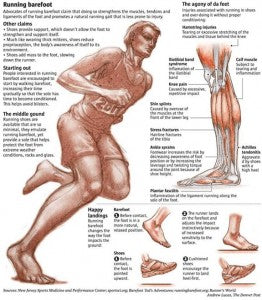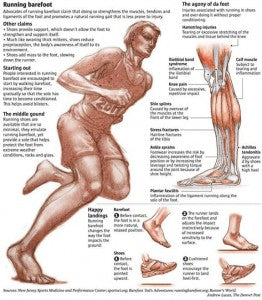
Preventing Stress Fractures
natural running overcoming injury running form3 December 2009
Earlier this week, the New York Times published an interesting story about a common injury that many, many runners suffer from – stress fractures. The article references a new study published in the journal Medicine & Science in Sports & Exercise which, “offers hope that, at least for runners, simple alterations in their stride or in the strength of their legs might reduce their risk for the most common type of stress fracture.”
We encourage you to read the whole article, but here’s the most salient point:
“The researchers determined that reducing stride length by about 10 percent seemed to reduce the stress on the tibia enough to lower the risk of a stress fracture.
Why, though, should shortening your stride affect your tibia at all? “Think of it this way,” says Brent Edwards, lead author of the study and now a post-doctoral research fellow in the Department of Kinesiology and Nutrition at the University of Illinois, in Chicago. “If you spend less time in the flight phase of running” — meaning in the air — “you’ll hit the ground with less force.” On the other hand, you’ll hit the ground more often. But in Mr. Edwards’s models, the reduction in pounding from an abbreviated stride outweighed the shock from a few additional strides per mile.”
Shortening your stride is one of the key tenets of the proper running form that Newton teaches. Newton Running coaches have been spreading the word for years that over-striding can lead to injuries, and now it’s nice to have some empirical data to back it up.
Also, here’s a great image the Denver Post ran a few months ago that illustrates many of the benefits of proper natural running form.


